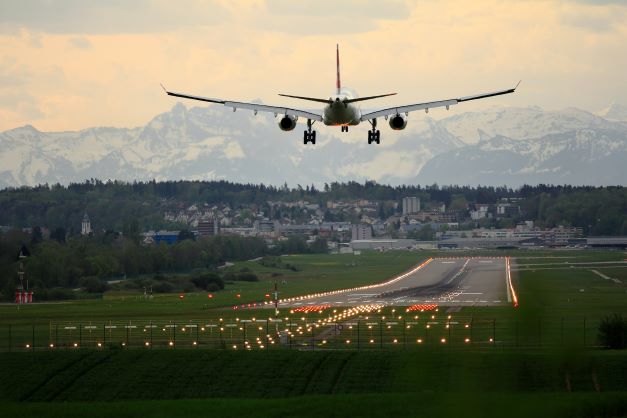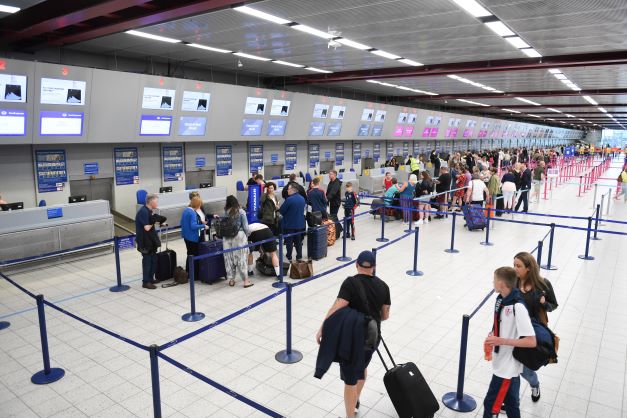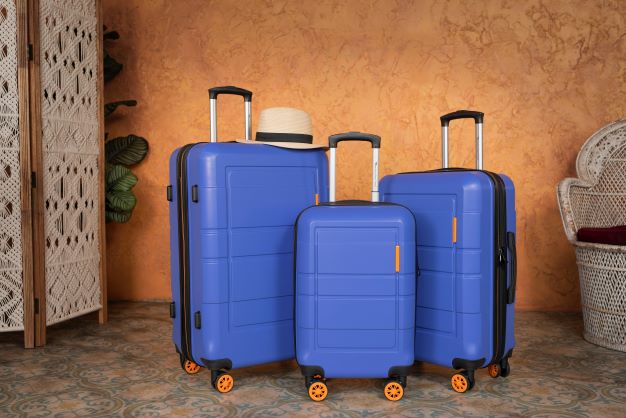Its been a turbulent year for aviation.
Following a prolonged Covid-shaped nightmare, 2022 looked to be a period of great recovery — holidaymakers, free from travel restrictions, were expected to leap at the opportunity to jet off without having to battle with entry requirements.
At first, this optimism seemed well placed. European travel in Q1 saw a year-on-year boost of 156% and despite the figures being below pre-pandemic levels, things looked good. However, the uptick proved to be a double-edged sword. Significant disruption appeared almost immediately, leading to unfortunate scenes of chaos at airports.
But what caused this array of aviation atrocities? To understand, we need to revisit the start of the pandemic.

Covid layoffs
When the 2020 lockdown hit, pretty much every industry went into panic mode. Apart from digital conferencing services and make-your-own sourdough companies, businesses faced a significant squeeze.
For aviation, the damage was catastrophic, with international and domestic travel all but grinding to a halt. To make matters worse, around 45% of aircraft at the time were leased rather than owned, meaning airlines had incredibly expensive investments sitting on runways, unable to repay their hefty fees.
Costs needed to be cut quickly. As a result, redundancies were carried out en masse, as flights remained grounded and the pandemic exceeded expectations. Those to go were the staff with little to do — cabin crew, pilots and airport staff.
Restrictions lifted
But, when summer 2022 hit, 32 European countries relaxed their covid rules, leading to a deluge of holiday-makers. Airlines needed to bolster their ranks quickly, but hiring proved difficult, as many ex-employees had moved on to more pandemic-proof careers.
Getting up to speed wasn’t always a quick process for new recruits with cabin crew, for example, training for months before they are deemed flight-ready. Similarly, security staff require extensive coaching and vetting given the sensitivity of their role.
Speaking back in June, Ryanair chief executive Michael O’Leary claimed that a lack of access to European workers was partly responsible for the disruption.
“If we can’t attract people to do those jobs like baggage handling, like security at the airport, we’re going to have to bring in workers, whether it’s from Ireland or from continental Europe to do them.” He said to Sky News.
“And Brexit is one of the big bug bears in the system – it has introduced enormous labour market inflexibility in the UK.”
Diminished talent pools and lengthy turnarounds weren’t the only issues. The industry was and in some cases still is blighted by strikes – with those taking industrial action complaining of stressful working conditions, long hours and real terms pay cuts. While some agreements have been reached, problems are likely to persist.

The result – lost luggage
The lack of staff, both in the air and on the ground has resulted in thousands of delayed/cancelled flights and a growing amount of lost luggage.
For us, the latter issue really hits home. While the problem is nothing new, this year has seen a significant spike, with insurer Mapre reporting that missing baggage claims are up 30% from 2019. In some instances, these result in delays of a few hours — inconvenient, but not catastrophic. For some, however, luggage is lost for weeks, or even worse, forever.
People often bring expensive or sentimental items with them while they travel. Temporarily losing or permanently misplacing these as the result of a poor process is a certain way to lose repeat business and/or create a social media firestorm.
Airlines and airports are surely aware of this, but the issue doesn’t look like it’s going anywhere. Staffing problems of this nature are rarely fixed quickly, and as lost luggage starts to build up, the backlog of unhappy customers grows.

How airports can reassure customers
It’s not hard to see the potential customer experience nightmare facing the industry today. Faith in flights is at rock bottom, and steps need to be taken to build confidence.
One part of the puzzle is implementing a lost property process at airports. This ensures that personal possessions lost on a journey have the best chance of being returned.
NotLost’s platform provides the best way to do this. Found items can be quickly registered by airport staff via our image recognition software, and passengers are able able to submit enquiries themselves through the self-help portal.
If the missing phone, suitcase or laptop is found, the passenger gets an answer in days, not months. Now, they can enjoy their holiday, safe in the knowledge their property is in safe hands.
Interested to find out more? Get in touch today with for a demo.
